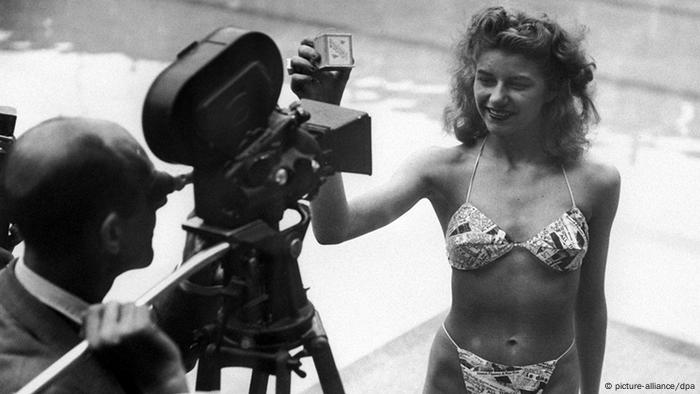It’s possible that I shall make an ass of myself. But in that case one can always get out of it with a little dialectic. I have, of course, so worded my proposition as to be right either way (K.Marx, Letter to F.Engels on the Indian Mutiny)
Saturday, July 10, 2021
BY NANCY CHEN
JULY 10, 2021 / 8:19 PM / CBS NEWS
Canadians are confronting an ugly truth. For more than a century, their government separated Indigenous children from their parents and placed them in residential schools where they were forced to assimilate. Hundreds did not survive.
Similar schools also existed in the U.S.
After the horrors and unexplained deaths recently revealed at former Indigenous residential schools in Canada, come renewed calls for justice at more than 350 similar schools in the U.S.
"There are many, many lives affected here," said Willie Johnson. "Not only from the students that perished here, but their descendants."
Johnson belongs to the Saginaw Chippewa tribe. He and the tribe are leading the drive to educate the public on what happened at the Mount Pleasant Indian Industrial Boarding School in central Michigan.
The school was run by the federal government and, like its counterparts, aimed to aggressively assimilate children to non-native culture. About 12,000 Indigenous children passed through before it closed in 1934.
"If we can imagine some of the students being as young as 2 years old, being away from your family, learning to be assimilated into the White culture was very devastating for many young people," Johnson said.
The tribe says many of the students suffered severe emotional and physical abuse, just as in Canada, and hundreds died.
Paul Walker is also Saginaw Chippewa. His grandfather was sent to Mt. Pleasant.
His father was forced to attend a boarding school in northern Michigan called Holy Childhood of Jesus, run by the Catholic Church.
So too did Walker and his five siblings. He attended the school from first through fifth grade.
Walker remembers his trip to Holy Childhood starting with an ultimatum to his mother.
"They came and told my mother that we had to go somewhere, that she'd never see us again," he said. "So they basically threatened to put us up for adoption, which happened a lot in the '70s, even in the '80s."
Walker's memories of his time at the school are filled with physical and mental trauma.
"We weren't allowed to speak our native language," Walker said. "We were told that we weren't worth anything. We were never going to amount to anything. We were dirty."
He said the whole point of the school was to "strip us of our culture. It was a form of cultural genocide. That's what it was, basically."
Interior Secretary Deb Haaland, who is the first Native American cabinet member, recently announced a new investigation into abuse the schools — which operated for over a century, and at one point held and estimated 60,000 Native American children.
Walker says his painful past led him to embrace his heritage. But for him, the burden remains heavy.
"It's heartbreaking, but for myself, I have a sense of guilt," he said. "I'm a survivor, I'm still here. I'm successful with what I do. I'm successful with who I've become. I feel for the ones that didn't, that couldn't."
A lasting reminder of the stark truths and injustice passed down for generations.
First published on July 10, 2021 / 8:19 PM
© 2021 CBS Interactive Inc. All Rights Reserved.
Issued on: 10/07/2021 -

Text by: NEWS WIRES
G20 finance ministers on Saturday gave their backing to a "historic" global deal to tax multinational companies more fairly and urged hold-out countries to sign up.
A framework for international tax reform, including a minimum corporate rate of 15%, was agreed this month by 131 countries.
But the endorsement by the 19 biggest economies plus the European Union will help ensure it becomes a reality following years of negotiations.
"After many years of discussions and building on the progress made last year, we have achieved a historic agreement on a more stable and fairer international tax architecture," the final statement said.
"We endorse the key components of the two pillars on the reallocation of profits of multinational enterprises and an effective global minimum tax."
French Finance Minister Bruno Le Maire was quick to hail the agreement, saying it was a once-in-a-century opportunity for reform.
"There is no turning back. We are putting an end to the fiscal race to the bottom and the digital giants will now pay their fair share of taxes," he said.
The reforms aim to prevent countries competing to offer the lowest tax rates to attract investment, which has often resulted in multinationals paying derisory levels of tax.
Final agreement is not expected until the run-up to the G20 leaders' summit in Rome in October.
'On the way'
The 15% minimum tax rate was agreed on July 1 under the auspices of the Organisation for Economic Cooperation and Development (OECD).
Countries including the United States, France and Germany, along with aid agencies such as Oxfam, have been pressing for a higher rate.
But some nations are opposed even to this, including EU member Ireland, which lured Apple and Google to Dublin with low tax rates.
In their final statement, the G20 ministers said they "invite all members" of the negotiations... that have not yet joined the international agreement to do so".
The minimum rate is expected to affect fewer than 10,000 major companies, but the OECD estimates an effective 15% rate would generate an extra $150 billion in revenue per year.
The measure is one of two so-called pillars of global tax reform that have been under negotiation for years, but which have been given new impetus under US President Joe Biden.
The other would give countries a share of the taxes on profits earned in their territory.
Multinationals operate in many countries -- oil giant BP is present in 85, for example -- but usually pay taxes on profits only in tax domiciles cherry-picked for their low rates.
It would initially apply to the top 100 or so companies, and is targeted at the most aggressive users of tax-reducing domiciles, such as technology giants Google, Amazon, Facebook and Apple.
Aid to poorer countries
The G20 ministers were meeting for the first time in person since February 2020, at the start of the global coronavirus pandemic, although China and India are attending virtually.
Hundreds of protesters converged on Venice, although the Arsenal area of the lagoon city, where the meeting is being held, is cordoned off to the general public.
Student Elena Carraro, 20, slammed the G20 as a rich person's club only out to protect its own.
"We don't expect the real change, radical change that we need. We need to act, we can't wait for them to do so, because the only thing they are interested in is their own wealth," she said.
Daily newsletterReceive essential international news every morningSubscribe
The G20, whose members represent about 85 percent of global wealth, also discussed climate change and the economic recovery from the pandemic, particularly how to ensure that poorer countries are not left behind.
The ministers warned that although the global outlook had improved since their last meeting in April, largely due to the roll-out of vaccination programmes, the crisis was not over.
"The recovery is characterised by great divergences across and within countries and remains exposed to downside risks, in particular the spread of new variants of the COVID-19 virus and different paces of vaccination," the statement said.
The ministers also backed an initiative by the International Monetary Fund to urgently increase aid to countries struggling to cope with the pandemic through special drawing rights, which are international reserve assets.
(AFP)
Bangladesh: Police arrest factory owner after deadly blaze
At least 52 people were killed when a fire engulfed a factory building where workers were locked inside. Several suspects have been arrested on murder charges.
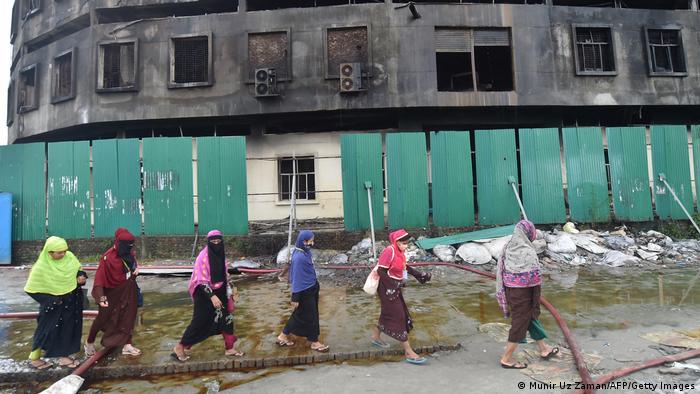 Workers walk past the charred exterior of the factory where a deadly blaze broke out in Rupganj, Bangladesh
Workers walk past the charred exterior of the factory where a deadly blaze broke out in Rupganj, BangladeshAuthorities in Bangladesh arrested eight people on Saturday over a fire at a food factory that killed dozens of people.
It's the latest deadly industrial disaster to hit Bangladesh, with officials launching a separate probe into the use of child labor at the factory.
Who was arrested?
Among the eight people arrested on Saturday was the chairman and managing director of the Sajeeb Group, which owns the factory, according to Home Minister Asaduzzman Khan.
The minister's remarks came during a visit to the site of the fire on Saturday in the town of Rupganj located outside of the capital Dhaka.
Khan said what happened to the workers was "murder," echoing statements from police who said the suspects are facing "murder charges."
Four of the chairman's sons were also among those detained, news agency AFP reported, citing local officials.

Relatives mourn the victims who were killed in the blaze, while others were still waiting for news of their loved ones on Saturday
Initial investigations revealed that the main exit of the factory was padlocked, trapping those inside.
Another investigation has also been launched into the use of child labor at the factory, as children between 11- and 14-years-old were found to be working there.
What happened during the fire?
The fire erupted on Thursday night at the Hashem Foods Ltd. Factory, with flames and smoke engulfing the five-story building.
Firefighters worked through Friday to put out the blaze at the building, where highly flammable chemicals were stored.
At least 52 people are confirmed dead, while several others remain missing.

The main exit of the factory was illegally locked, authorities said
On one floor alone, rescuers discovered the bodies of 48 people. Family members struggled to identify remains at the morgue while others waited for news of their missing loved ones on Saturday.
Officials have not yet commented on what started the blaze, but said they uncovered several safety violations at the site in addition to the locked exit.
Safety concerns renewed
Bangladesh pledged safety reforms following a series of tragic fires and industrial disasters in recent years.
The Rana Plaza disaster of 2013 in particular sparked the push for reform. Over 1,100 people died when the nine-story complex collapsed.
In 2012, a fire at a garment factory outside of Dhaka killed 112 people. The workers were also trapped behind locked gates at the factory.
A major fire also destroyed shelters at a Cox's Bazar refugee camp for Rohingya Muslims earlier this year.
rs/csb (AFP, AP)
Issued on: 10/07/2021 -

Cannes (France) (AFP)
After making one of the most successful adult animated films of all time in "Waltz With Bashir", Israeli director Ari Folman vowed never to tackle the mind-bending complexity of such projects again.
But when he got the chance to bring the iconic story of Anne Frank to the big screen for children, he couldn't resist -- even though it ended up taking over his life for eight years.
"Where is Anne Frank", which debuted at Cannes this week, is another beautifully drawn cartoon, and his first to be aimed at younger audiences.
Folman happily admits this is because his last attempt at an adult animation -- "The Congress" starring Robin Wright and Harvey Keitel -- was a massive flop.
Despite being praised by critics, that film was "a disaster in the box office," Folman told AFP in an interview at Cannes.
"I hassled so many people, raised $10 million, had hundreds of animators, and then no one saw the movie!
"I thought: no more animation for adults. If you want to deal with these incredibly tough productions, it should be for a wide audience, which means a family movie," he said.
It helps that "The Diary of Anne Frank" remains one of the most beloved and important books of the last century.
Folman's film follows Kitty, Anne's imaginary friend from the diary, jumping between the present day and the real-life story of Anne and her family hiding from the Nazis in occupied Amsterdam.
"(Anne) became part of my life in a way that I can't even explain," said Folman. "My youngest daughter was here at the screening, she's 14. She told me she can't remember life without Anne Frank. She was six when I started."
- 'Wicked as hell' -
The film seeks to move beyond the iconic image of Anne, Folman said.
"She's an icon but more than that, she was a teenager -- isolated, going through adolescence, funny, wicked as hell, a great observer of the adults, seeing everyone's faults, attacking them. She was great fun. I thought we should see all aspects of her character," said Folman.
The film seems destined for a wide audience, though Folman says he would need some serious brainpower to take on another animated project.
"For the next film, I'm looking for a mathematician, or a chess player -- I'm not joking -- to do the calculations," he said.
That's because there are so many moving parts to consider with an animated film.
"Where is Anne Frank", for instance, had 1,100 shots, each having to go through 11 different stages, shared between 12 studios in different countries.
"Each delay impacts every part of the chain," said Folman, half-laughing, half-despairing. "If you miss something, you are half-a-million dollars short. No one can calculate it."
"My dream is an alien machine which can see all 12,000 elements, each change happening in every studio, how long it takes and how we can fix it. I couldn't find one. Maybe Kasparov can do it!"
© 2021 AFP
Issued on: 10/07/2021

Cannes (France) (AFP)
Veteran film provocateur Paul Verhoeven hit back Saturday at Catholics who have condemned his lesbian nun movie "Benedetta" as blasphemous over scenes in which a statue of the Virgin Mary is used as a sex toy.
The "Basic Instinct" and "Showgirls" director, who has also long drawn the ire of feminists, told reporters at the Cannes film festival that he had nothing to be ashamed of.
"How you can you be blasphemous about something that happened, that's true?" the 82-year-old told reporters in response to social media outrage over the illicit relationship at the heart of the film between a 17th-century Italian abbess and one of her novices.
"You cannot talk about blasphemy about something that happened four hundred years ago. I think that's wrong," he added.
The big-budget romp, which delights in its rather obvious eroticism, is in the running for Cannes top prize, the Palme d'Or.
Belgian star Virginie Efira -- who also featured in Verhoeven's Oscar-nominated "Elle" about a woman's rape fantasies -- plays the errant abbess Benedetta Carlini, who is stripped of her authority (and just about everything else) when her passion for a fellow nun is revealed.
While many critics panned the film, with The Guardian saying that "Verhoeven may have to do some contrite murmuring in the confessional for this one", the BBC proclaimed it a "searing exploration of faith and organised religion" as it anointed it with five stars.
The movie industry bible Variety took a middle path, deeming it a "guilty-pleasure nunsploitation" flick.
Verhoeven adapted the film from an acclaimed non-fiction book by Judith C. Brown, "Immodest Acts: The Life of a Lesbian Nun in Renaissance Italy".
The director, who has previously denied there was such a thing as a "male gaze", even claimed that his film could be seen as feminist, an assertion backed by one of his actresses, Louise Chevillotte.
"From the moment you let women have complex characters that are so violent and so subversive, yes, there is feminism," she said.
© 2021 AFP
Issued on: 10/07/2021 -

Cannes (France) (AFP)
Two years after shaking France to the core with their protests, the "Yellow Vests" were back in the spotlight Saturday, this time in a film by one of its most innovative directors.
"The Divide" by Catherine Corsini describes events at a Paris hospital during violent clashes between demonstrators and police that turned the capital's chic neighbourhoods into virtual war zones throughout 2018 and 2019.
Using handheld shots and rapid edits to capture the chaos as doctors and nurses struggle to cope, the film depicts a country in deep conflict during the presidency of former investment banker Emmanuel Macron, the main target of the angry protests.
Sparked by a petrol tax hike, the Yellow Vest movement quickly broadened to reflect widespread outrage over the plight of ordinary people and the indifference of Parisian elites.
"It was hugely important for me to talk about what is going on in France today," Corsini told AFP in an interview.
"Our society has become more and more violent, and social misery has become a permanent state of affairs," she said.
- 'Must take a stand' -
Corsini -- who freely acknowledges being part of the progressive, educated and fashionable urbanites known as "Les Bobos" -- said she came to realise "that my films must take a stand and become more political".
Riot police in the film are depicted as violent and uncaring, while injured demonstrators overrun the hospital in a desperate bid to escape police brutality.
Corsini said she made nothing up: media widely reported yellow vest protesters losing their eyes when they were hit by police projectiles. One had his hand ripped off picking up a police flash-ball grenade.
The film's main male character, Yann, is shot in the leg by police, but worries more about losing his precarious job as a truck driver than about his injury.#photo1
In hospital he meets a same-sex couple going through a relationship crisis.
At first the encounter between the provincial "prole" and the artistic Parisian couple -- which is inspired by Corsini's own relationship -- is testy.
But then it morphs into a degree of mutual understanding, something Corsini said France, too, could use more of.
"Our country is full of extremes," Corsini said. "We want both social protection, and we also want to be liberal.
"There are so many contradictions, but they have made us who we are. Opposition and rebellion hold us together," she said, before adding: "We need to find ways to live together."
- 'Full of extremes' -
France's hospital workers are the real heros of the film.
Proud to be working for a health system that, says one, "was still free of charge when I last looked", they are overworked, underpaid and exasperated, but also full of humanity and humour.
They also feel deep sympathy for the yellow vest protesters and won't denounce them to police, despite their boss's order to do so.
"The Divide" was shot before the Covid-19 pandemic which pushed France's hospitals and health workers to a new breaking point.
The coronavirus also put an end to the yellow vest demos, although there have been some attempts at a comeback.#photo2
In her three decades of filmmaking, the 65-year-old Corsini has made her mark primarily as a discreet but powerful voice for women's freedom, exploring themes of homosexuality, patriarchy and gender equality.
"The Divide" is among 24 films competing for the festival's top prize, the Palme d'Or.
© 2021 AFP
In 1946, a French engineer came up with a scandalous new piece of clothing for women: the bikini, made up of strips of cloth that revealed more than they hid on the beach and in the pool.
EVEN AT 75, THE BIKINI NEVER GETS OLD
The story of four triangles
Four tiny triangles held together by string - that's about as small as you can get. On July 5, 1946, a striptease dancer by the name of Micheline Bernardini posed in front of cameras by a Paris swimming pool, wearing a two-piece swimsuit: the very first bikini. It was invented by French mechanical engineer, Louis Réard. Little did he know at the time, the bikini would be here to stay. 1234567891011
French mechanical engineer Louis Réard couldn't find a willing model, so he hired striptease dancer Micheline Bernardini for the presentation of his bikini on July 5, 1946.
The timing was no coincidence. The US military had just grabbed the world's attention by testing a nuclear bomb on the Bikini Atoll in the South Pacific. The new swimwear trend turned out to be equally explosive.
Réard did not miscalculate: Showing that much skin was not acceptable at that time. Moral guardians were convinced that women should don skirts and long aprons instead of shamelessly taking their clothes off.
Skimpy attire for the future
The bikini was banned in public for many years, and even the famous fashion magazine "Vogue" rejected the tiny swimsuit. Film stars like Marilyn Monroe and Brigitte Bardot, however, remained faithful to bikinis and were regularly photographed in them.
The James Bond film "Dr. No" in 1962 marked a turning point for the two-piece. Swiss model and actress Ursula Andress sported one in an unforgettable scene, and her swimsuit went down in history as the "Dr. No Bikini."
In the 1960s, the bikini quickly became unstoppable and took on many forms, from the self-adhesive "Trikini" to the topless "Monokini" (which, however, didn't become a bestseller).
The swimwear revolution went hand in hand with the growing emancipation of women, which was also marked by the birth control pill, the miniskirt and the social unrest of the 1960s. For many women, the bikini was a symbol of liberation.
A coveted fashion item
Even after 75 years, the bikini can still be found at fashion shows, beaches and pools the world over. Models no longer have to be begged to present the latest designs. In the 1980s and 90s, bikini fashion shows became even more popular than the otherwise beloved bridal wear events. Supermodels like Claudia Schiffer, Linda Evangelista and Naomi Campbell competed for such jobs on the catwalk.
A classic worn by women of all ages and body types, the bikini has made a fashion statement for the past seven decades, ans is here to stay.
New elections in Bulgaria: Tired of lies, young voters want 'green' solutions
After failed attempts to form a government, new elections will take place on July 11. Young Bulgarians intend to cast their ballots for a new generation of politicians who promise to fight corruption and pollution.

Supporters of the 'Democratic Bulgaria' alliance, which includes the 'Green Movement'
"We urgently need more digitalization, legal reforms and a pension increase," explains Daniel Yanev, a 26-year-old Bulgarian living in Berlin. In the summer of 2020, he actively took part in protests against the then-government in his homeland. " I simply find it impossible to accept that Bulgaria cannot fulfil its economic potential and that, as a result, people's standard of living is still way below the EU average. And all that is down to the ubiquitous corruption and the way in which public money is wasted in Bulgaria," Yanev tells DW.
On July 11, Bulgarians will be called to the ballot box for the second time this year, after attempts to form a government after the April 4 election failed. Young people who took to the streets last year are once more determined to cast their votes in order to finally precipitate change in the corruption-ridden Balkan country — even if that means they will have to interrupt their summer holidays to do so.
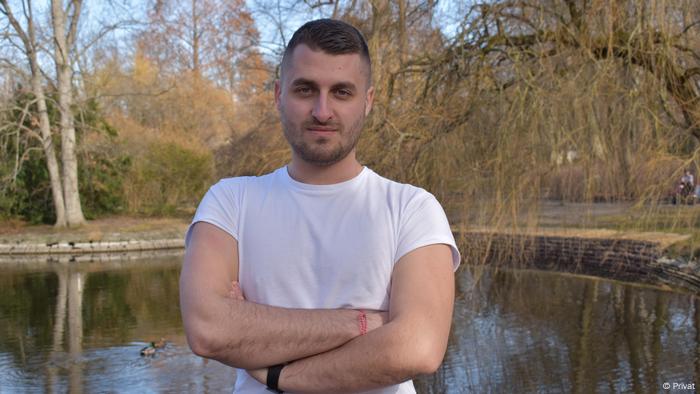
Daniel Yanev is one of the founders of the 'Are you lying?' fact-checking platform
Together with friends, Daniel Yanev set up a fact-checking platform where its name translates to "Are you lying?" During the election campaign, the founders research whether politicians spread falsehoods or manipulative statements and publish their findings online. "We give special attention to checking statements relating to areas of economy and health," Daniel says. "Incorrect information on issues such as these are particularly dangerous."
Although Daniel has already decided which party will receive his support on election day, he is at a loss — because, even members of "his" party do not tell the truth sometimes. "Working on the 'Are you lying' platform has taught me to think critically."
Suffering from corruption
"Corruption is the main scourge in our country," agrees Boris Bonev. In 2015, he joined other young activists in founding "Save Sofia," a NGO watchdog which monitors and criticizes the policies of the Bulgarian capital's mayor, Yordanka Fandakova, and the city's administration.

Boris Bonev, co-founder of the watchdog NGO 'Save Sofia'
Bonev, who studied business as well as innovation and technology management in Paris, and the "Save Sofia" platform constantly submit proposals as to how Sofia can become a more modern, more innovative and "greener" city. In 2019, the now 33-year-old ran for mayor on an independent ticket and received more than 10% of the vote.
The struggle begins in Sofia
According to Bonev, the opposition's victories in the Hungarian capital Budapest and the Turkish megacity Istanbul show that dismantling a corrupt system of the kind that was established in the last couple of years in Bulgaria by former Prime Minister Boyko Borisov, has to start in the big cities. "The struggle for Bulgaria begins in Sofia," Bonev says with conviction.

Until May 12, 2021, Boyko Borisov served as Bulgaria's Prime Minister
According to Transparency International's most recent corruption index, 90% of Bulgarians think that corruption at a government level is problematic. "People are tired of living in Europe's most squalid and most chaotic cities, under a government guided by corruption, instead of level-headed decisions," Bonev says.
'Green' solutions
Bonev's "Save Sofia" NGO has declared its support for nine of the candidates fielded by the "Democratic Bulgaria" (DB) alliance. DB is an amalgamation of parties which also includes the "Green Movement." DB gaining seats in parliament in the wake of the April 2020 elections meant that Bulgaria had Green MPs for the first time since the 1990s. Of the nine DB candidates endorsed by "Save Sofia," five are representatives of the Bulgarian Greens.

Each year, air pollution in the Bulgarian capital claims hundreds of lives
"Our organization is part of the so-called green wave in Europe," Bonev says. He is convinced that Bulgaria and the capital, Sofia, in particular urgently need green solutions. "The fight against air pollution, which each year claims hundreds of lives in Sofia, is one of our main priorities. The other important goal is reducing car traffic. This can only work if alternatives are provided."
Twenty-six-year-old activist Daniel Yanev is looking for alternatives as well. He believes that Bulgaria needs a new generation of politicians — modern, young and independent: "At the election on July 11, I will support candidates who are experts and who do not have a dubious past." According to Yanev, such people are not just needed for Bulgarian politics, but also for the economy of the EU member state.
REST IN POWER
Holocaust survivor, singer Esther Bejarano dies, aged 96
As a teenager, she had to perform in the Auschwitz girls' orchestra. But Esther Bejarano never stopped loving music — or fighting against racism.
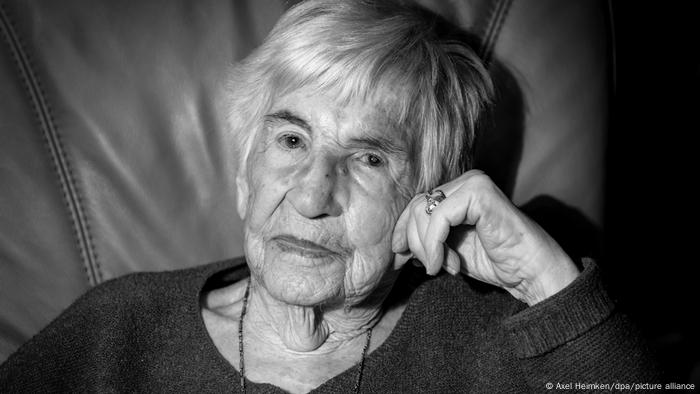
Esther Bejarano died peacefully early Saturday morning in an Israeli hospital
What an impressive woman! Not even 5 feet tall, she seemed to burst with more energy than a strongly built man. Like, for example, her son Joram, who accompanied Esther Bejarano during her performances. Even though she used to lean on his arm, there was never any doubt about who was in charge: Esther, of course, always knew what she wanted.
Even in her 90s, Esther Bejarano appeared on stage and sang, accompanied by the band Microphone Mafia. The Cologne-based men rapped, Joram played the bass, and Esther warbled the refrain.
In the last years of her life, her voice had lost some of its former strength that sent her around the world to perform. Bejarano accepted that and agreed to let Microphone Mafia play her songs as recordings during concerts. Besides, her performances were more about the message anyway: putting an end to racism, antisemitism and fascism. Hardly anybody else could have conveyed this message with as much passion and energy as Bejarano did.
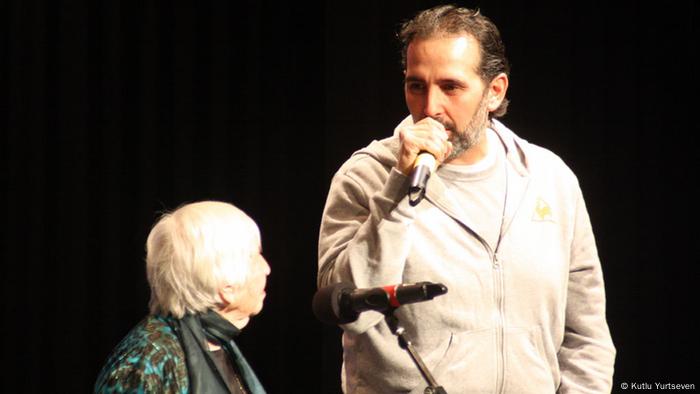
Bejarano performed on stage with Microphone Mafia into her 90s
A youth spent in concentration camps
Born in 1924 under the family name Loewy as the daughter of the chief cantor of the Jewish community in the city of Saarlouis, as a child Esther witnessed how the National Socialists seized power in Germany. The political shift impacted the course of her life.
"One's best years as a youth are those from ages 16 to 20. But what kind of a youth did we have? None, really. A horrible youth," she told DW shortly before her 90th birthday. The Nazis had all but stolen this part of her life. Harassment at school, separation from her parents, three concentration camps and a death march – Esther Bejarano had to endure all of that.
As she recounts in her book Memories, she arrived in Auschwitz together with many other people, completely exhausted after several days of travel in a cattle car. Bejarano was greeted by SS officers with the words: "Now, you filthy Jews, we will show you what it means to work."
She was forced into hard labor that consisted of carrying heavy stones. At some point, she heard that the SS was searching for girls for a camp orchestra. She was fortunate enough to be included in the group as an accordion player – even though she'd never played the instrument before. Nevertheless, the skill she had acquired playing the piano while still living at home, her musicality and her will to survive proved to be a tremendous help.
In the girls' orchestra at Auschwitz
The orchestra itself was about sheer survival: 40 young women had to perform whenever the camp's inmates marched off to work or when new trains with Jews on board arrived from all over Europe.
"You knew that they were going to be gassed, and all you could do was stand there and play," Esther Bejarano told DW in 2014. That was the very worst she had to endure in Auschwitz, she said.
Experiencing how the Nazis abused music for their own horrible purposes, however, never had a negative impact on her sense of the beauty of music. The popular songs and marches she had to play in Auschwitz, she recounted, had nothing to do with true music. She played music composed by Mozart and Beethoven in the camps without thinking about the horrible crimes committed by the Nazis. For her, their music symbolized another way of life.
After the war, Bejarano, who had also spent time in the women's concentration camp in Ravensbrück, finally turned a childhood dream into reality: to become a singer.
She studied singing in Tel Aviv and, even during her studies, went on tour in Israel and abroad. She then met the future father of her children. Her post-war life was a happy one, she recalled. In the 1970s, however, she decided to return to Germany due to her husband's health problems.
She opted for Hamburg since the city held no particular significance for her during her childhood. At first, she told DW, she constantly wondered what the people she saw in the streets might have done during the war. "When I saw people who looked a bit older than me, I always wondered whether they had perhaps been the murderers of my parents and my sister."
But rather than buckling from the burden, she decided to fight. Her goal was to help prevent "an inhuman ideology" from spreading again, and her method was by telling her life story.
The struggle continues
Along with Anita Lasker-Wallfisch, Bejarano was one of the few survivors of the Auschwitz girls' orchestra. Also the co-founder of the International Auschwitz Committee, she was frequently invited onto talk shows to speak about her experiences. She also spoke in many schools and proved to be a popular guest as she inspired young people with her music.
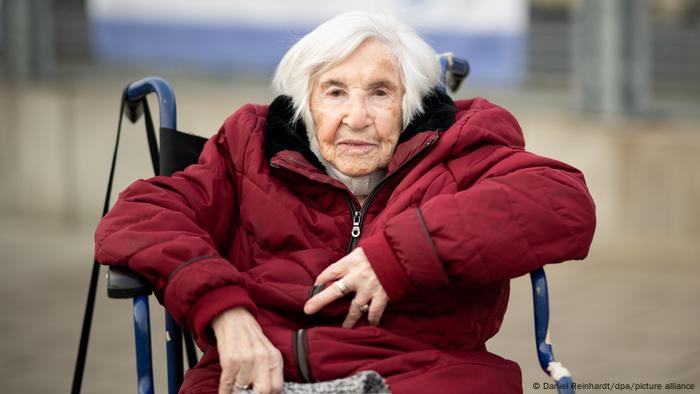
Bejarano spoke of the atrocities committed by the Nazis and fought xenophobia until the end of her life
Bejarano remained strongly committed to fighting xenophobia until the end of her life, often prompting attacks and criticism from right-wing groups. She did not remain silent on the issue, however. In 2004, she caused an uproar when she reported that police had directed water cannons at a wagon on which she was standing during a protest against right-wing extremism.
In 2013, she spoke out in favor of refugees, calling police checks of Africans in Hamburg as "inhuman and unacceptable" as European asylum policy in general.
In August 2015, a Facebook user accused her in a post of "complicity in mass murder" while "letting others walk into their deaths" with her eyes wide open because she had "voluntarily joined in the founding of a camp orchestra." Bejarano reacted promptly by filing a lawsuit.
After all, she had frequently and heavy-heartedly recounted how SS officers had stood directly behind the orchestra while the girls cried and trembled during their performances. She told German public broadcaster NDR at the time that she had never before felt so utterly insulted and that the Facebook user's claim had denigrated "all those who had been in Auschwitz."
Bejarano closely followed legal trials of various Auschwitz supervisors and guards and called the public appearances of Holocaust denier Ursula Haverbeck in Detmold "an impunity." She should have been brought to justice, said Bejarano.
"Never again Auschwitz" — that avowal was a vital precondition for Bejarano's decision to return to Germany. But only hearing such statements on memorial days did not suffice for her. She saw to it that the attitude was integrated into everyday life. Esther Bejarano died peacefully early Saturday morning in an Israeli hospital. This tiny woman full of energy and spirit will leave behind a void in Germany.
This obituary has been translated from German.
Watch video 06:13
Esther Bejarano: The girl in the Auschwitz orchestra
Watch video 03:04
The melodies of Auschwitz
https://www.dw.com/en/holocaust-survivor-singer-esther-bejarano-dies-aged-96/a-58224215
